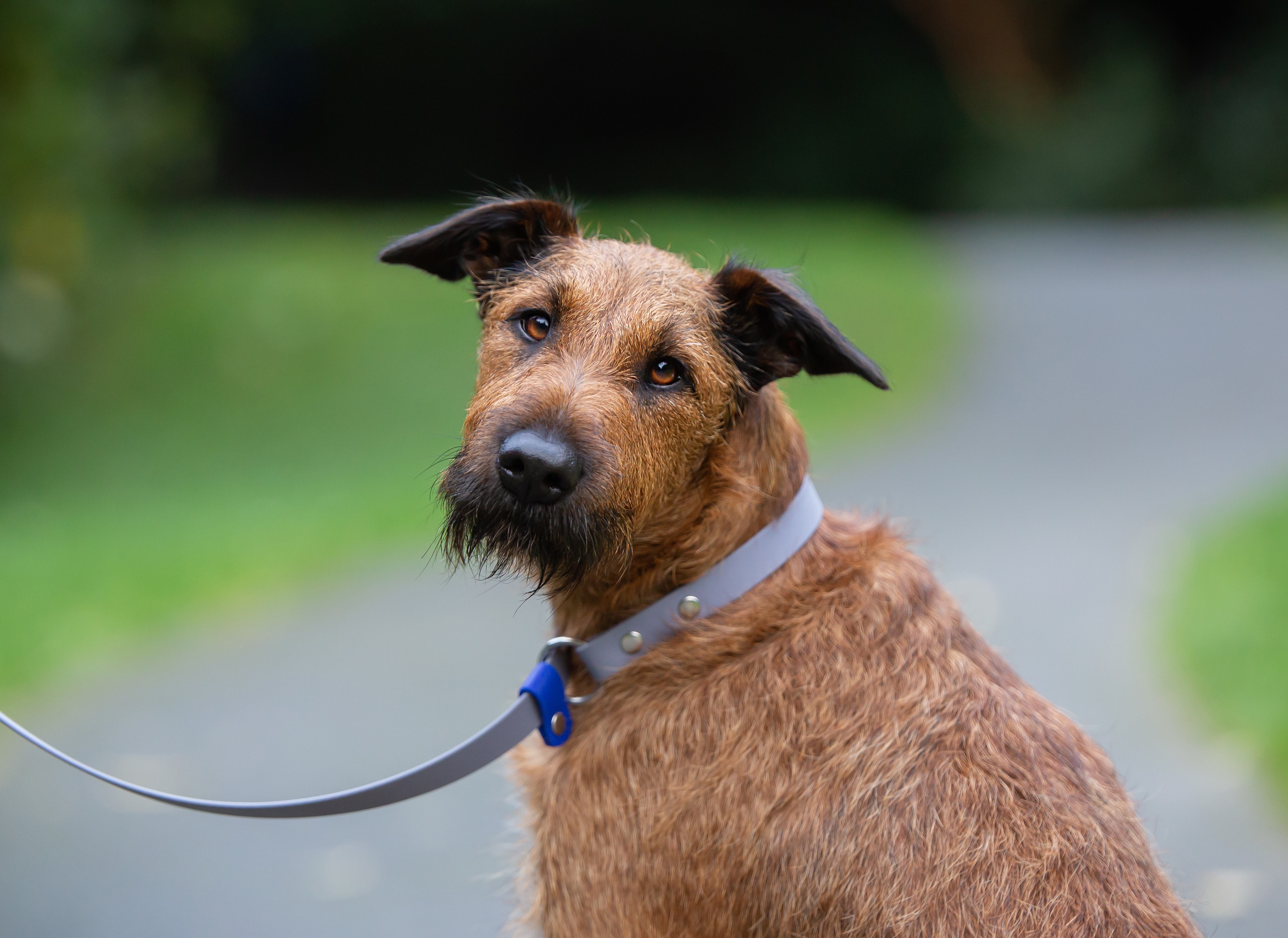Made in New Zealand
1-3 day production time
Global shipping
How do I stop my dog from pulling on their lead?
Battling with a dog that pulls on their lead is the daily reality for many 'fur parents' - but it doesn't need to be this way.

Straining, scrambling, gagging and wheezing. For those who own a ‘serial leash puller’, these are the distressing sights and sounds of the daily dog walk.
Allowing a dog to persistently pull on their lead transforms the daily walk from a fun, healthy, bonding experience to a distressing physical ‘power struggle’. For us humans, the walk becomes stressful and unpleasant. And for our canines companions, it becomes confusing, exhausting and downright dangerous. And yet - lead pulling is frightfully common.
So how do we stop our dogs from engaging in this annoying and damaging behaviour?
The first step is understanding that loose lead walking (being the opposite of pulling) is a learned behaviour. We can’t simply slap a lead on our dogs and expect them to know what we want them to do. We need to teach them. And this process starts with the most foundational lesson of all - that there are consequences for behaviour. We need to show our dogs that pleasant things happen when they do ‘good’ and unpleasant things happen when they do ‘bad’.
While the best training outcomes are achieved by taking a balanced approach - it’s important to know which technique to apply to each situation. Positive reinforcement, such as a treat, is a powerful and effective technique to encourage increased frequency of a behaviour (perfect when teaching something new), but it is not effective in discouraging undesirable or ‘bad’ behaviours (such as leash pulling). In these situations, positive correction is most effective. Where positive correction is the use of verbal or physical corrections.

So what type of correction is best to stop lead pulling and how should it be applied?
The physical nature of lead pulling itself calls for physical correction, best applied via an appropriate training tool. Choosing the best training tool depends largely on your dog - their age, the length of time they’ve been leash pulling, their level of sensitivity and their responsiveness.
For young or sensitive dogs, use of a slip lead or martingale (half chain) collar may be sufficient, where a correction is delivered via a quick ‘pop’ or jerk of the lead. But for those stubborn dogs who are ‘serial leash pullers’, you’ll need a tool capable of delivering a more intense correction. I’d recommend something like the e-collar, which delivers a correction via a quick electric stimulation or ‘zap’. Achieving success with these type of tools relies on accurate timing and consistent use. A correction must be delivered the instant ‘bad’ behaviour is demonstrated, and it must be delivered every single time - without fail. Poor timing or inconsistent application of the rules will cause your dog distress and confusion. And remember that a quick lesson is a good lesson. Delivering a lesser number of more intense corrections is far better than ‘hen pecking’ or nagging your dog with numerous ineffectual corrections. This will simply teach them to ignore you. If your dog isn’t immediately responding to your corrections, they’re not intense enough. You will either need to use a different tool or up the intensity of the tool you’re using.
But, an important caution on the use of all training tools - any tool can be misused, even a lead. To ensure both you and your dog have the a positive experience and achieve the desired results, every tool requires an introduction. This means we need to learn how to use the tool safely and appropriately. You also need to give your dog time and opportunity to become familiar and comfortable with the tool, to understand what the various signals/sensations mean, and how they’re expected to respond.
So, if you want a harmonious daily dog walking experience, commit to teaching your dog what is expected of them, find the right training tool and learn how to use it safely and appropriately. Take time to introduce the tool to your dog, then apply the rules - consistently and relentlessly. This process takes time and effort, but be patient and stick with it, the rewards are well worth it.
If you’re looking for a martingale (half chain) collar or slip lead - we offer the Led & Collared® Secure Collar and Slip Lead. Just head to the dogs section. And if you’re looking for an e-collar, I recommend you invest in a quality product and go for something from the Educator range (https://www.educatorcollars.com/). These e-collars are made in the USA and used widely in the international dog training community. They’re also available on a range of local New Zealand websites. Finally, if you're seeking training resources, my personal favourite international dog trainer is Haz Othman of Shield K9 Dog Training (https://www.shieldk9.ca/). Shield K9 are super serious about achieving results, use a balanced training approach and offer excellent online courses.
- March 2023
© 2023 Led & Collared®. All Rights Reserved. Wellington, New Zealand.





